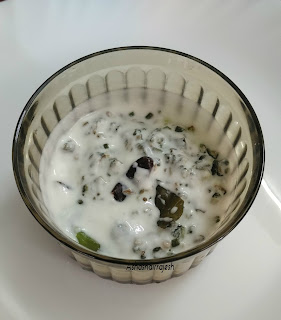Pumpkin is a very common backyard vegetable. The greatest plus-point of pumpkin is that it is a low calorie food item. Our humble pumpkin is very rich in vitamins, especially vitamin A, antioxidants and minerals like calcium, potassium etc.
Pumpkin is a great cholesterol controller. It is also recommended for those who are trying to reduce their weight. Pumpkin has anti-cancerous properties too. Pumpkin seeds are a great source of fibre and it is good for the heart as it contains mono-unsaturated fatty acids (MUFA).
As far as cooks are concerned pumpkins can be converted into different variety of dishes. One can make curries, soups and desserts. Every part of the pumpkin vine can be cooked and consumed - leaves, fruits, flowers and seeds.
Preparation:
- Remove skin and seeds of the pumpkin. Wash and cut it into medium sized cubes. Peel, wash and slice the shallots. Wash and chop the tomato; wash and cut each green chilly into 3 or 4 pieces.
- Soak lime sized ball of tamarind in half cup warm water. If using tamarind pulp avoid this step.
- Pressure cook the pumpkin pieces along with turmeric powder, tamarind, salt and 11/2 cups of water, if you are using tamarind pulp. If you are using tamarind water use only 1 cup of water. After the first whistle remove from the stove and set aside to cool.
- Heat oil in a pan, add the shallot pieces and saute for a minute. Now add the green chilly pieces and tomato pieces. Stir for a minute. Cover and cook on medium flame until the vegetables are well cooked. Remove the lid and saute till the water content goes. Lower the flame, add the red chilly powder, coriander powder, fenugreek powder and the asafeotida powder. Stir a few seconds or until the raw smell goes.
- Add the cooked pumpkin along with the water into the pan. Stir gently and add salt if needed. Add the jaggery. Boil on medium flame for 5 minutes. Remove from the stove and pour into a serving bowl.
- Heat oil in a pan, add the mustard seeds and dry red chilly pieces, When the mustard splutters, lower the flame. add the curry leaves and asafeotida. Switch off the stove. Pour it over the pumpkin curry. Keep the bowl covered for 10 minutes. Tasty Pumpkin Pulingary is ready. Stir and serve along with rice.
Ingredients:
Pumpkin cubes - 1 cup
Shallots - 8 nos.
Tomato - 1 small
Green chilly - 2 nos
Tamarind pulp - 1 teaspoon
Turmeric powder - 1/4 teaspoon
Salt to taste
Coriander powder - 1 teaspoon
Fenugreek powder - 1 pinch
Asafeotida - 2 pinches
Red chilly powder - 1 teaspoon (half teaspoon each of Kashmiri red chilly powder and regular chilly powder.)
Coconut oil - 1 - 2 tablespoons
Jaggery grated - 1/4 teaspoon
For Seasoning:
Coconut oil - 1 - 2 teaspoons
Mustard seeds - 1/4 teaspoon
Dry red chilly - 2 nos
Curry leaves - 1 sprig
Asafeotida - 1 pinch











